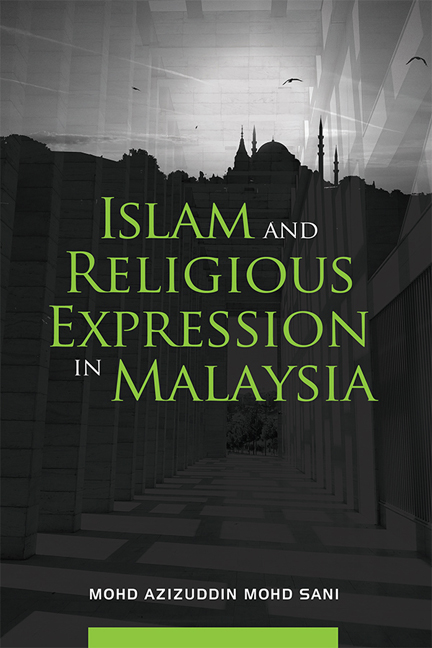Book contents
- Frontmatter
- Cantents
- Foreword
- Preface
- Acknowledgements
- List of Acronyms and Abbreviations
- 1 Freedom of Expression
- 2 Islamization Policy and Islamic Bureaucracy
- 3 Inter-Religious Expression
- 4 Intra-Religious Expression
- 5 Extreme Expression and Radicalization
- 6 New Malaysia under Pakatan Harapan
- 7 Conclusion: Seeking for a Genuine Freedom of Religious Expression
- Bibliography
- Index
- About the Author
7 - Conclusion: Seeking for a Genuine Freedom of Religious Expression
Published online by Cambridge University Press: 10 November 2020
- Frontmatter
- Cantents
- Foreword
- Preface
- Acknowledgements
- List of Acronyms and Abbreviations
- 1 Freedom of Expression
- 2 Islamization Policy and Islamic Bureaucracy
- 3 Inter-Religious Expression
- 4 Intra-Religious Expression
- 5 Extreme Expression and Radicalization
- 6 New Malaysia under Pakatan Harapan
- 7 Conclusion: Seeking for a Genuine Freedom of Religious Expression
- Bibliography
- Index
- About the Author
Summary
Introduction
This book examines the Islamization policy and the roles of Islamic bureaucracy in enforcing the policy of religious expression. Overall, religious expression in Malaysia is limited to the practices allowed by the Sunni doctrine. As Islam is the religion of the Federation and the jurisdiction of Islam is under the state authority, the Islamic bureaucracy has the authority to interpret Islam. In Western Liberals’ perspective, theoretically there are two schools of thought imposed upon religious expression—one is very hostile to religious expression because their intention is to protect the non-believers, and the other is open to all views including religious expression. In Malaysia, the societal belief, constitution and legislation must subscribe to Sunni beliefs even though this is not mentioned at all in the Federal Constitution, but is mentioned in the state's Islamic law. Thus, Chapter 1 traces the historical and contemporary background of freedom of expression in Malaysia. As freedom of expression is enshrined under Article 10 of the Federal Constitution, there have been many restrictions imposed against that freedom which were sometimes based on religious arguments and practices. No doubt that the right to legitimate religious expression is also protected by the Federal Constitution, but not hate speech.
Chapter 2 outlines the Islamization policy which was started in the 1960s but became the official policy of the country in the 1980s during the administration of Prime Minister Mahathir Mohamad. During this period, several permanent federal and state religious bodies, such as JAKIM and Syariah courts, were established to promote Islam. In fact, Mahathir also introduced Islamic banking, securities, and insurance laws. Besides, he attempted to increase the power of Islamic legal authorities in the Federal Constitution. Thus, Mahathir's Islamization policy was called the Inculcation of Islamic Values in Administration. This was continued by the policies of Mahathir's successors—Abdullah Ahmad Badawi's Islam Hadhari and Najib Razak's Wasatiyyah.
Through these policies, the government provided support for the expansion of the Islamization policy. Islamization would not be successful without the human capital produced by the government to administer the policies. Thus, many Islamic education institutions were established to offer courses in Islamic studies and Islamic laws.
- Type
- Chapter
- Information
- Islam and Religious Expression in Malaysia , pp. 163 - 180Publisher: ISEAS–Yusof Ishak InstitutePrint publication year: 2020



